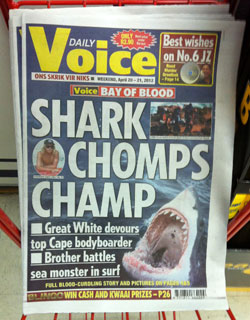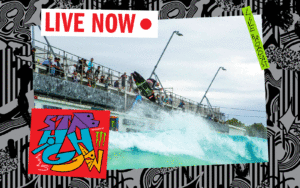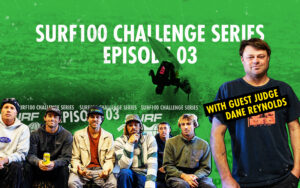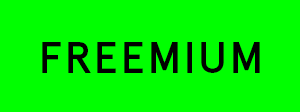Sharks (and why they eat us)
From Stab issue 58, in stores now and available online this week. Cape Town has moved past South-West Australia as the go-to capital of Great White attacks. Craig Jarvis asks why… ‘Shark Chomps Champ’ was the gratuitous headline, tied in with a picture of a huge Great White shark with its jaws open, that graced the front cover of a daily South African tabloid. The sort of wanton drama that solidifies Peter Benchley’s Jaws myth. Outside of the surfing realm, the real world talks about how the world has a misaligned view of these striking creatures, how we are the interlopers in their world wherein we cannot see nor breathe and how we, the uneducated surfing masses, do not have this superior base of untold knowledge that our esteemed scientists possess. While scientists talk and construct theories, however, our boys are getting eaten. Horrifically, terribly, often fatally, and with increased frequency. David Lilienfeld is the latest victim. David, a bodyboarder from South Africa, was attacked by what some witnesses called a four-to-five-metre Great White shark at Koel Bay, which falls on the eastern side of False Bay, on the Indian Ocean (warm side) of Cape Town. David had just paddled out with his brother Gustav into a small, glassy and clear barrelling righthand wedge called Caves when the shark hit. It hit him hard, severing his leg, before coming back and attacking him two more times. David was eventually dragged in and was declared dead on the beach. It was over in a few minutes. The background is a bit longer. A few weeks prior to this, a shark research boat called the Ocearch had arrived in Cape Town to do research and filming for their Shark Men program, a TV series that was formerly aired by National Geographic but who had subsequently disentangled from the production prior to this research mission. Chris Fischer, an American, led the research program. Fischer had applied for a licence to catch and tag sharks in the False Bay area, for further monitoring, and to film the catching and tagging for the television show. Biodiversity and Coastal Research director Dr Alan Boyd awarded the licence, which included the fact that they could use five tons of chum to attract the sharks. The local surfing community was enraged and spokespeople sent out shark warnings. Dr Boyd responded by saying that, “there is no additional risk to the public.’ And then, David was attacked. Minutes after the attack happened, Boyd revoked the chumming research licence, saying ‘this incident is a tremendous tragedy and I’m very shocked. No more field work will be proceeding from here on out.” But, David was dead. For years the Cape Town surfing community has been at war with the cage diving trade. While cage diving scoops oodles of tourism coin, and has been allowed to carry on chumming the water and attracting sharks in False Bay, surfers and ocean goers have been dying. The cage diving fraternity has always postulated that with the Great White Shark being a protected species and with more surfers and ocean goers around, the human/shark interactions are more numerous, and it’s therefore a natural course of events there will be an increase in attacks. Many people disagree. Some people refer to Pavlov’s Dog and the theory of conditioned response. Ring a bell and then give a dog some food. Do it over and over again. After many times of this pattern, ring a bell and hold back the food, and the dog will start salivating in expectancy of the food. It has been conditioned to associate the ringing bell with dinner. So the question that begs is, do sharks get conditioned by continual chumming? Do they associate humans and human interaction, whether it is boats or cages with humans inside, with food? Scientists say this is rubbish. Surfers warned the community that if the Ocearch started chumming there would be a severe risk of a shark attack. Government gave the permit and the American researchers threw their chum overboard, effectively attracting the sharks they wanted for tagging and for footage. In other news, a Great White shark killed a 20-year-old bodyboarder in front of his brother, and Boyd immediately revoked the licence. The surfing community sees this as the ultimate admission of guilt, leaving the Lilieveld famiy with nothing but the thought of what could have been had the permit not been issued in the first place. We will never know if the attack was a direct result of the Ocearch boat being in False Bay, throwing chum into the ocean and catching, tagging, traumatising and disorientating resident sharks for their TV show. The City of Cape Town in their report exonerated Ocearch and their team of researchers. They stated that the dorsal fin of the shark that attacked David broke the surface and, according to one witness, no tag was activated. Therefore it can be ascertained with utmost certainty that the Ocearch team is not to blame. Yet, a slew of screaming surfers have more questions that remain unanswered. What about the other sharks that were in the chum zone that weren’t tagged? Is there such a thing as inter and intra-species communication? What about the general increased shark activity? What if the dorsal fin didn’t protrude high enough for the electronic tag to activate? What if the tag was a Friday afternoon defect? An extensive study done in the Neptune Islands, South Australia, on the effects of chumming and shark behaviour, shows some startling results that the scientists want nothing to know about. The Neptune Islands are the only place in Australia where shark cage diving occurs. They also chum the waters (called berleying) to attract the sharks. The study showed marked changes in the sharks’ behaviour. The sharks that were being berleyed became resident longer in the and around the island, up from 11 days to 21 days over a one-year period. There were increased frequency in visits and there were more
From Stab issue 58, in stores now and available online this week.
Cape Town has moved past South-West Australia as the go-to capital of Great White attacks. Craig Jarvis asks why…
‘Shark Chomps Champ’ was the gratuitous headline, tied in with a picture of a huge Great White shark with its jaws open, that graced the front cover of a daily South African tabloid. The sort of wanton drama that solidifies Peter Benchley’s Jaws myth.
Outside of the surfing realm, the real world talks about how the world has a misaligned view of these striking creatures, how we are the interlopers in their world wherein we cannot see nor breathe and how we, the uneducated surfing masses, do not have this superior base of untold knowledge that our esteemed scientists possess. While scientists talk and construct theories, however, our boys are getting eaten. Horrifically, terribly, often fatally, and with increased frequency.
David Lilienfeld is the latest victim. David, a bodyboarder from South Africa, was attacked by what some witnesses called a four-to-five-metre Great White shark at Koel Bay, which falls on the eastern side of False Bay, on the Indian Ocean (warm side) of Cape Town. David had just paddled out with his brother Gustav into a small, glassy and clear barrelling righthand wedge called Caves when the shark hit. It hit him hard, severing his leg, before coming back and attacking him two more times. David was eventually dragged in and was declared dead on the beach. It was over in a few minutes. The background is a bit longer.
A few weeks prior to this, a shark research boat called the Ocearch had arrived in Cape Town to do research and filming for their Shark Men program, a TV series that was formerly aired by National Geographic but who had subsequently disentangled from the production prior to this research mission.
Chris Fischer, an American, led the research program. Fischer had applied for a licence to catch and tag sharks in the False Bay area, for further monitoring, and to film the catching and tagging for the television show. Biodiversity and Coastal Research director Dr Alan Boyd awarded the licence, which included the fact that they could use five tons of chum to attract the sharks. The local surfing community was enraged and spokespeople sent out shark warnings. Dr Boyd responded by saying that, “there is no additional risk to the public.’
And then, David was attacked.
Minutes after the attack happened, Boyd revoked the chumming research licence, saying ‘this incident is a tremendous tragedy and I’m very shocked. No more field work will be proceeding from here on out.”
But, David was dead.
For years the Cape Town surfing community has been at war with the cage diving trade. While cage diving scoops oodles of tourism coin, and has been allowed to carry on chumming the water and attracting sharks in False Bay, surfers and ocean goers have been dying. The cage diving fraternity has always postulated that with the Great White Shark being a protected species and with more surfers and ocean goers around, the human/shark interactions are more numerous, and it’s therefore a natural course of events there will be an increase in attacks.
 Many people disagree. Some people refer to Pavlov’s Dog and the theory of conditioned response. Ring a bell and then give a dog some food. Do it over and over again. After many times of this pattern, ring a bell and hold back the food, and the dog will start salivating in expectancy of the food. It has been conditioned to associate the ringing bell with dinner. So the question that begs is, do sharks get conditioned by continual chumming? Do they associate humans and human interaction, whether it is boats or cages with humans inside, with food?
Many people disagree. Some people refer to Pavlov’s Dog and the theory of conditioned response. Ring a bell and then give a dog some food. Do it over and over again. After many times of this pattern, ring a bell and hold back the food, and the dog will start salivating in expectancy of the food. It has been conditioned to associate the ringing bell with dinner. So the question that begs is, do sharks get conditioned by continual chumming? Do they associate humans and human interaction, whether it is boats or cages with humans inside, with food?
Scientists say this is rubbish.
Surfers warned the community that if the Ocearch started chumming there would be a severe risk of a shark attack. Government gave the permit and the American researchers threw their chum overboard, effectively attracting the sharks they wanted for tagging and for footage.
In other news, a Great White shark killed a 20-year-old bodyboarder in front of his brother, and Boyd immediately revoked the licence.
The surfing community sees this as the ultimate admission of guilt, leaving the Lilieveld famiy with nothing but the thought of what could have been had the permit not been issued in the first place.
We will never know if the attack was a direct result of the Ocearch boat being in False Bay, throwing chum into the ocean and catching, tagging, traumatising and disorientating resident sharks for their TV show. The City of Cape Town in their report exonerated Ocearch and their team of researchers. They stated that the dorsal fin of the shark that attacked David broke the surface and, according to one witness, no tag was activated. Therefore it can be ascertained with utmost certainty that the Ocearch team is not to blame.
Yet, a slew of screaming surfers have more questions that remain unanswered. What about the other sharks that were in the chum zone that weren’t tagged? Is there such a thing as inter and intra-species communication? What about the general increased shark activity? What if the dorsal fin didn’t protrude high enough for the electronic tag to activate? What if the tag was a Friday afternoon defect?
An extensive study done in the Neptune Islands, South Australia, on the effects of chumming and shark behaviour, shows some startling results that the scientists want nothing to know about. The Neptune Islands are the only place in Australia where shark cage diving occurs. They also chum the waters (called berleying) to attract the sharks.
The study showed marked changes in the sharks’ behaviour. The sharks that were being berleyed became resident longer in the and around the island, up from 11 days to 21 days over a one-year period. There were increased frequency in visits and there were more sharks to be seen on average.
As well as this, the daily movements of sharks changed to closely match the arrival and departure of shark cage dive operators. This has caused the Australian authorities alarm and instead of opening up more days per year for cage diving, the days have been slightly trimmed.
It’s easy enough to join the dots to the fact that chumming (berleying) changes shark patterns and it’s obvious that it’s not healthy to change their patterns. The South African surfing community is up in arms while at the same time mourning the loss of a brother and the mainly land-based scientists are messing around, denying this, claiming that and shouting ‘Eureka!’ to each other on Facetime on their iPhones, or whatever it is that they do.
What none of this explains however, are the shark attacks in Western Australia. Four fatal attacks since September last year in an area where there is no chumming nor cage diving. Nope. Got nothing for you there, apart from the fact that there is a very high population of Great Whites in the area, who have been growing unchecked since protection swung into town a dozen years ago.
So, what is it? The fact they’re protected? That we chum? A combo? Christ!














Comments
Comments are a Stab Premium feature. Gotta join to talk shop.
Already a member? Sign In
Want to join? Sign Up